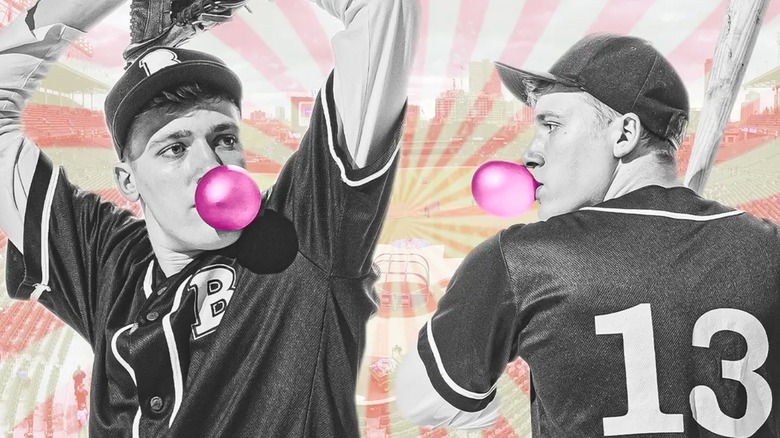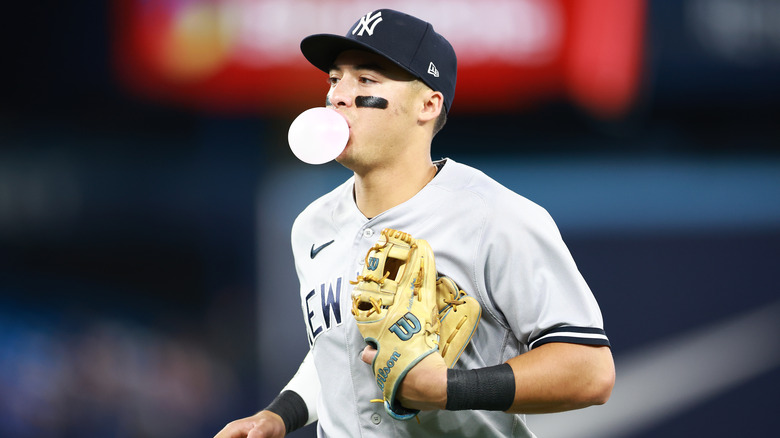How Bubblegum Became Such An Iconic Part Of Baseball Culture
As iconic American cartoonist Charles M. Schulz of "Peanuts" fame once wrote in a comic panel, "How can you say someone is great who's never had his picture on bubble gum cards?" These collectible trading cards depicted MLB players and included a stick of gum, and today, those 4x6-inch baseball "cabinet cards" from the 20th century can fetch hundreds of dollars on eBay. But, how did bubblegum and baseball become so inextricably interwoven in the first place?
It all started with chewing tobacco and, believe it or not, the origin was largely utilitarian. Players would chew tobacco during games to generate spit, which would help combat the surplus dust in the air that players kicked up as they ran and slid on the field. The switch to bubblegum is largely thanks to Rob Nelson, the pitcher for the Portland Mavericks in 1977. However, to say Nelson was a player wouldn't be the most fitting description. At the time, he mostly rode the bench, sold tickets, and coached youth baseball camps outside of the MLB.
Per the lore, one day, Nelson noticed the team's bat boy, Todd Field, carrying an emptied-out tobacco pouch full of chopped-up licorice — an ingenious way for the teenage worker to mimic the appearance and dust-clearing utility of chewing tobacco without actually dipping. The black licorice spit even resembled the tar-like color of the real deal. Incidentally, Nelson didn't chew tobacco either, and he adopted Field's idea before later co-creating Big League Chew.
Big League Chew and Wrigley hit a home run
In Field's childhood home, he and Nelson created the prototype of what would become Big League Chew shredded gum, funded by Jim Bouton (aka "Bulldog"), former pitcher for the New York Yankees. Nelson pitched the product to Amurol, which is owned by Wrigley Gum, and the rest is (literally) history. The Wrigley connection was no accident. Wrigley Field, home of the Chicago Cubs, was bought by William Wrigley Jr. in 1921. He renamed the stadium in 1927, and even though Wrigley Field has changed ownership twice since then, the name stuck.
Chewing gum mania had arrived with such fervor that in the 1920s, American consumers averaged 105 sticks of gum per year. By the 1930s, William Wrigley Jr. was one of the wealthiest men in America. In 1980, Wrigley sold Big League Chew in the stadium as a test, and it was an instant hit. Bouton threw the idea $10,000, and Big League Chew saw $18 million in sales during its first year alone.
Considering that the Mavericks folded in 1977, the bubblegum-baseball connection has outlived them by nearly half a century. Bubblegum was cemented as a prominent fixture in the dugout during the rest of the decade, and the kid-friendly chewing tobacco allowed fans of all ages to get involved in baseball culture. (We'll save the Babe Ruth-Baby Ruth candy controversy for another time.)

